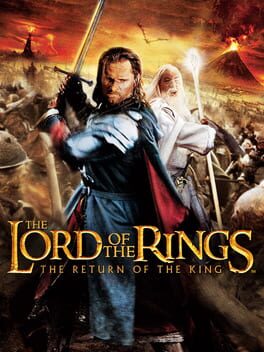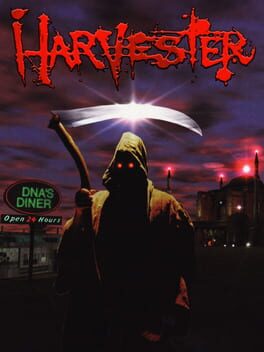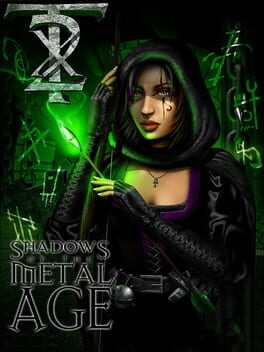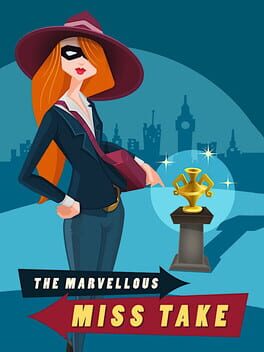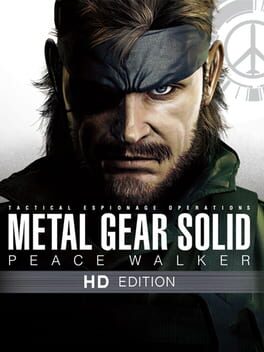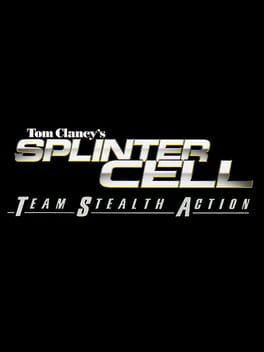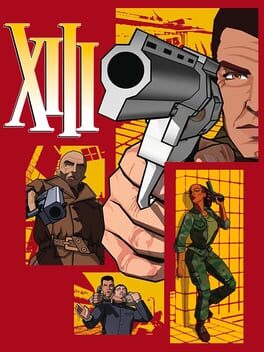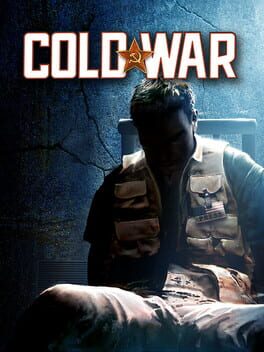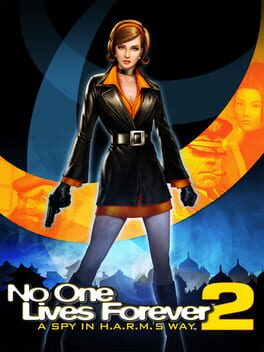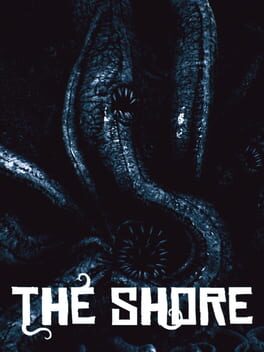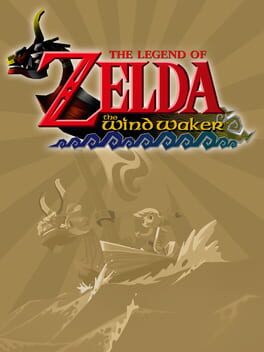thekotti
I might've avoided some frustration since I had a decent idea on what to level up and remembered how the game works for the most part. Didn't stop me from struggling with some of the early missions either way, and one mission with instakill moments was particularly annoying. Either way, it's an legitimately fun action game that from what I recall gets much better in co-op. The level select with multiple paths was also a nice little touch, but it's a real shame you can't revisit levels until after beating the game. I can imagine getting screwed over by making bad skill choices and being unable to level up further.
1995
The interconnected world is neat especially for PS1, it's nice to have a variety of weapons and spells that don't just make each other obsolete and I like the way different in game maps have details in different areas.
But unfortunately just about everything else has aged like milk. The combat feels like being a tank that's trying to perform melee attacks with its turrent, the areas often lack any identifiable landmarks and consist of 1-2 textures making navigation awkward and visuals ugly, and making progress is usually a matter of random exploration that doesn't feel like progress as it's not clear what you were trying to accomplish in the first place. What finally made me quit was a boss near the end that was not only a ludicrous difficulty spike but also required clearing a boss rush just to try again.
But unfortunately just about everything else has aged like milk. The combat feels like being a tank that's trying to perform melee attacks with its turrent, the areas often lack any identifiable landmarks and consist of 1-2 textures making navigation awkward and visuals ugly, and making progress is usually a matter of random exploration that doesn't feel like progress as it's not clear what you were trying to accomplish in the first place. What finally made me quit was a boss near the end that was not only a ludicrous difficulty spike but also required clearing a boss rush just to try again.
1996
Had Harvester come out today, it'd be another indie game trying to be weird for the sake of being weird and I'd ignore it without another thought, but having come out in the mid-90s adds another layer of weird that's probably the biggest curiosity the game has to offer.
As a game and not a relic from the 90s, Harvester is not very good. The puzzles aren't great, the things you do to advance the plot don't make sense even in the game's context and the last third just drags on unnecessarily. The individual characters, the voice acting and FMVs are entertaining, but that's about it.
As a game and not a relic from the 90s, Harvester is not very good. The puzzles aren't great, the things you do to advance the plot don't make sense even in the game's context and the last third just drags on unnecessarily. The individual characters, the voice acting and FMVs are entertaining, but that's about it.
2013
I hate to say this about a fan project, but I honestly don't get the point of this when Thief fan missions exist. The stealth mechanics, movement and AI are all clunkier than in Thief, and all that was very apparent trying this soon after Thief 2X. The custom missions are obviously a big part of the appeal, and what the four missions I tried seemed to have in common was huge size, high loot requirements and a low amount of interactable objects, a combination which meant that I often found myself needing more loot and ramming my face into every surface and mashing the use key until I accidentally found something that could be picked up or used.
I will shoutout the mission A House of Locked Secrets though, it had a creative setup and a well executed gimmick that I'm not sure would be possible in Thief. It also helped that it took mostly place in an open ended area and had no specific loot requirement but instead focused on varied story objectives. It was very long like the other missions, but it felt like there was constant progress rather than just spending forever scouring every corner. It alone might make The Dark Mod worth trying, but personally I'm not going to dig any deeper for more gems like it when the other three missions I tried were less than enjoyable.
I will shoutout the mission A House of Locked Secrets though, it had a creative setup and a well executed gimmick that I'm not sure would be possible in Thief. It also helped that it took mostly place in an open ended area and had no specific loot requirement but instead focused on varied story objectives. It was very long like the other missions, but it felt like there was constant progress rather than just spending forever scouring every corner. It alone might make The Dark Mod worth trying, but personally I'm not going to dig any deeper for more gems like it when the other three missions I tried were less than enjoyable.
2009
Compared to Dark Souls, there are some parts that are clearly worse like the limits on inventory capacity and the entire healing item system, but in the grand scheme of things that's stuff's pretty irrelevant. What makes me prefer DaS1 over DeS is that the interconnected world structure is just much more interesting compared to the more level-based one. I do however vastly prefer the DeS structure over what the poorly connected worlds later Souls games went with, and it's also what makes DeS stand out from the rest. Also while the quality of the bosses was all over the place, most of them were very different from one another which I like a lot. What I didn't like a lot was that the runbacks to attempt bosses again sucked exactly as much as expected. Taking it slow and fighting enemies is interesting when you're first exploring the areas, but having to deal with them in order to get back to a boss repeatedly is just a bad time.
Either way, not as good as Dark Souls but different enough in a good way, and better than the sequels. Also the second half of Tower of Latria is amazing, one of my favorite areas in the series.
Either way, not as good as Dark Souls but different enough in a good way, and better than the sequels. Also the second half of Tower of Latria is amazing, one of my favorite areas in the series.
No point in discussing the gameplay since Thief 2 is obviously very good to begin with, and Thief 2X doesn't change that. Even if unofficial, it's a great expansion that makes good use of the world of Thief with by having a good mix of different types of levels from horror to steampunk, and the levels live up to the Thief 2 standards, one or maybe two misses aside. I especially like how almost every mission felt distinct and stood out from the rest, which is something Thief 2 struggled with.
For such a short game, it's still about twice as long as it should be. The gameplay is good and simple, but the levels don't have anywhere near enough variety to carry the full length of the game. Visually they all look the same and most of the main character's levels do a decent job introducing new ideas, other levels are a slog. Every map has a variation for all characters, and 2/3 variations tend to be repetitive and pointless, yet mandatory to a degree. If the side characters' missions were actually optional I'd like this a lot more.
Worst Metal Gear by a long shot. I can admire making something like this for the PSP and remastering it later from a technological and preservational perspective, but the game is still a grindy chore.
Mother Base was a terrible addition that absolutely ruined the pace of the game. I would've liked to see the story through and the main gameplay was okay considering the PSP roots, but the way items and weapons are tied to the base is just a nightmare. When for the 4th time in 8 hours I was forced to manage Mother Base spreadsheets so I could develop required items/weapons and then was forced to do pointless side missions to pass time for the development to finish, I was done.
The comicbook style cutscenes looked neat at least.
Mother Base was a terrible addition that absolutely ruined the pace of the game. I would've liked to see the story through and the main gameplay was okay considering the PSP roots, but the way items and weapons are tied to the base is just a nightmare. When for the 4th time in 8 hours I was forced to manage Mother Base spreadsheets so I could develop required items/weapons and then was forced to do pointless side missions to pass time for the development to finish, I was done.
The comicbook style cutscenes looked neat at least.
The N-Gage port of Splinter Cell which turned out to be just a port of the Game Boy Advance version. By far the worst thing are the controls which somehow use most of the 12 buttons available but in the worst ways possible. Running is done by double tapping a direction which leads to lots of accidental sprints and the attack button either melees or pulls out a weapon depending on the context making combat and stealth takedowns very clumsy and unreliable. Instead of dedicated run and melee buttons, we have dedicated buttons for both night- and thermal vision as well as a three buttons that open a menu from which you can switch the vision mode.
On top of the bad controls, there's no checkpoint indicator and the rooms look very, very similar to one another so when restarting it's often hard to tell where you are or what you were doing. The enemies can also see farther than the players which means getting spotted from off screen happens often, unless you're willing to stop and use the sticky camera every five steps. Overall, this feels like half a step above some of those downloadable phone games from the mid-2000s and the physical release feels like a waste of plastic. At least the music was alright, aside from obviously poor N-Gage sound quality.
On top of the bad controls, there's no checkpoint indicator and the rooms look very, very similar to one another so when restarting it's often hard to tell where you are or what you were doing. The enemies can also see farther than the players which means getting spotted from off screen happens often, unless you're willing to stop and use the sticky camera every five steps. Overall, this feels like half a step above some of those downloadable phone games from the mid-2000s and the physical release feels like a waste of plastic. At least the music was alright, aside from obviously poor N-Gage sound quality.
2003
I don't normally care much for linear, story driven shooters so maybe it's the nostalgia talking, but I really like XIII. The commitment to the comic book style makes it still look unique and great with all the sound effect texts and picture in picture moments, the guns for the most part feel really satisfying to use and the pacing and the mission/map variety are excellent. And most surprisingly, the stealth sections are actually good which you wouldn't expect from a shooter like this. Good stealth weaponry, stylish footstep indicators and lenient enough AI go a long way.
The only real criticism I have is that some of the checkpoints are a bit too long and at least on the highest difficulty towards the end taking cheap shots from cover becomes too necessary.
The only real criticism I have is that some of the checkpoints are a bit too long and at least on the highest difficulty towards the end taking cheap shots from cover becomes too necessary.
2005
Started off as a surprisingly decent Splinter Cell clone but in the last third devolved into a terrible shooter. The most interesting thing about it is that it made me think how a stealth game could work if it borrowed the map structure and resource management from Resident Evil.
A large, gradually opening up building to navigate and persistent enemies and gear that you need to carefully manage over time is something I haven't seen in a stealth game, MGS2 being probably the least far off and still nowhere close. And Cold War wasn't very close either, it just had a large building to navigate over several hours, but it was still split into linear levels where areas are arbitrarily locked off and nothing persists between levels even if the areas are reused. But at least it was leaning in that direction.
A large, gradually opening up building to navigate and persistent enemies and gear that you need to carefully manage over time is something I haven't seen in a stealth game, MGS2 being probably the least far off and still nowhere close. And Cold War wasn't very close either, it just had a large building to navigate over several hours, but it was still split into linear levels where areas are arbitrarily locked off and nothing persists between levels even if the areas are reused. But at least it was leaning in that direction.
2021
It looks impressive both technically and design wise, but sadly there's not much more to it. The story feels lacking, the puzzles boil down to finding what you can interact with, the audio balance is sketchy and doesn't respect the settings, and the ridiculous amount of invisible walls spoil any sense of exploration.
2021
The way Northern Journey balances exploration and retro shooting in a folklore fever dream is unlike anything else I've played. It's also a great example of how a good art direction can go a long way, because of that and the sense of scale in the maps this is probably one of the best looking games I've ever played.
The only real criticism I have is that some of the levels, especially towards the end, drag on for a bit too long and have a few too many enemies. But that doesn't make it any less wonderful and unique.
The only real criticism I have is that some of the levels, especially towards the end, drag on for a bit too long and have a few too many enemies. But that doesn't make it any less wonderful and unique.
Looks and sounds really good, the combat has a lot more to it than I expected and the open sea is one of the rare open worlds that I really like exploring. There's always something new in the horizon to check out but the world isn't overwhelmingly big.
I'm in the minority who liked most of the Triforce quest as well, as it gave me a good excuse to really check everything out. Some bits could've been cut down, like some of the maps feeling like repeats and the deciphering process being completely unnecessary, but it also could've been made more demanding in other ways. The map of maps seemed like a boring way to do the quest and was given very early so I only used it for the last one but I assume most people don't do that and spoil the quest for themselves. The treasures in the sea being indicated with a pillar of light was also disappointing, I think manually comparing maps to find the right spot would've been much more satisfying.
Overall it's a comfy game that moves mostly at a good pace and doesn't demand too much focus from the player. Nostalgia helps too.
I'm in the minority who liked most of the Triforce quest as well, as it gave me a good excuse to really check everything out. Some bits could've been cut down, like some of the maps feeling like repeats and the deciphering process being completely unnecessary, but it also could've been made more demanding in other ways. The map of maps seemed like a boring way to do the quest and was given very early so I only used it for the last one but I assume most people don't do that and spoil the quest for themselves. The treasures in the sea being indicated with a pillar of light was also disappointing, I think manually comparing maps to find the right spot would've been much more satisfying.
Overall it's a comfy game that moves mostly at a good pace and doesn't demand too much focus from the player. Nostalgia helps too.
